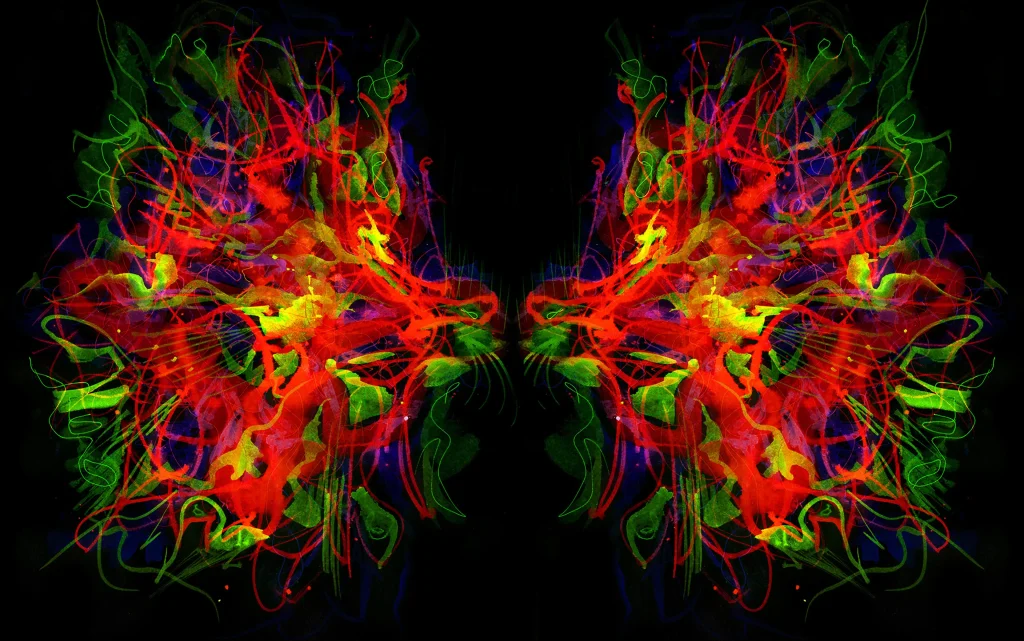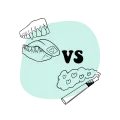DMT and Science Fiction: How the Compound Has Inspired Popular Culture
Dimethyltryptamine, commonly known as DMT, is a powerful psychedelic compound that has fascinated scientists, spiritual seekers, and artists for decades. Known for its intense, short-lived effects, DMT has become an iconic substance in both scientific research and popular culture. DMT’s vivid hallucinations, surreal experiences, and philosophical insights make it a subject of intrigue in science fiction. This article explores how DMT has influenced science fiction, from literature to films and video games.

What is DMT?
The Chemical Structure of DMT
DMT is a naturally occurring tryptamine alkaloid found in various plants and animals, as well as in trace amounts within the human brain. It is structurally similar to serotonin, a neurotransmitter that affects mood and cognition. DMT is typically consumed through smoking, vaporization, or ingestion in the form of ayahuasca, a traditional Amazonian brew. The compound is renowned for its ability to produce powerful visual and auditory hallucinations that can last for a brief but intense period. DMT and Science Fiction
The Experiences of DMT Users
When smoked or vaporized, DMT induces a rapid onset of effects, often described as a journey to alternate realities or dimensions. Users report encountering vivid geometric patterns, intense colors, and alien-like entities. Some claim to enter what they believe to be otherworldly realms, meeting entities that seem both benevolent and malevolent. These experiences are often interpreted as encounters with beings from another plane of existence, leading to deep spiritual and philosophical insights. DMT and Science Fiction
DMT and the Rise of Modern Science Fiction
The Influence of Psychedelic Culture in the 1960s
Psychedelics like LSD and DMT emerged in the mid-20th century during a time of cultural transformation. In the 1960s and 1970s, the counterculture embraced psychedelics to expand consciousness and explore new ideas. Many science fiction writers, artists, and filmmakers incorporated these substances, sparking a new era of mind-bending science fiction. DMT and Science Fiction
The connection between psychedelics and science fiction was reinforced by the exploration of altered states of consciousness, parallel realities, and the quest for higher knowledge. DMT, as a substance that could radically alter perception and expand consciousness, became a symbol of the possibilities of human evolution, transcendence, and the exploration of the unknown. DMT and Science Fiction
The Connection Between DMT and Parallel Realities
In many science fiction narratives, characters explore alternate dimensions or parallel universes, often through the use of mind-altering substances. DMT’s ability to induce what feels like a journey to otherworldly realms makes it a natural fit for science fiction’s exploration of parallel realities. In such stories, the line between the real and the imagined becomes blurred, with characters frequently encountering new dimensions, alien entities, and metaphysical phenomena. DMT and Science Fiction
DMT in Science Fiction Literature
“The Doors of Perception” by Aldous Huxley
Aldous Huxley’s The Doors of Perception helped shape the intersection of psychedelics and science fiction. Huxley’s exploration of mescaline laid the foundation for discussions on psychedelics’ potential to alter consciousness. His ideas on perception, spirituality, and human evolution influenced later science fiction works exploring similar themes through DMT and other psychedelics. DMT and Science Fiction
Philip K. Dick and the Search for Reality
One of the most influential science fiction authors who delved into altered states of consciousness was Philip K. Dick. His works, such as Do Androids Dream of Electric Sheep? (which inspired the movie Blade Runner) and VALIS, often explore themes of reality, perception, and identity. Dick’s own experimentation with psychedelics, including DMT, deeply influenced his writing, as he sought to understand the nature of reality and the mind. DMT and Science Fiction
In VALIS, for instance, Dick explores the idea of an alternate, divine reality that can only be accessed through altered states of mind. The protagonist, Horselover Fat, experiences what he believes is contact with an extraterrestrial intelligence, a theme reminiscent of DMT experiences where users report encounters with non-human entities. Through Dick’s lens, psychedelics become a gateway to greater truths, but also a source of paranoia and existential confusion, mirroring the unpredictable and enigmatic effects of DMT. DMT and Science Fiction
Terence McKenna and the “Stoned Ape Theory”
Terence McKenna was a prominent advocate for exploring psychedelics and their potential to unlock human consciousness. His books The Archaic Revival and Food of the Gods explored psychedelics’ role in human evolution. McKenna’s “Stoned Ape Theory” suggests psychoactive substances catalyzed early human evolution, inspiring science fiction narratives on consciousness and mind expansion. DMT and Science Fiction
DMT in Science Fiction Films
“The Matrix” (1999)
One of the most iconic science fiction films that evokes themes similar to DMT experiences is The Matrix. In the film, the protagonist, Neo, is offered a choice between a red and blue pill. Taking the red pill leads him to an altered state where he can see the world as it truly is: a simulated reality controlled by machines. This idea mirrors DMT users’ experiences of seeing beyond the veil of ordinary reality into alternate dimensions or truths. The use of the red pill as a metaphor for awakening resonates with many DMT users, who often speak of the compound as a tool for “awakening” to higher levels of consciousness. DMT and Science Fiction
“Enter the Void” (2009)
Enter the Void, a film by Gaspar Noé, is often cited as one of the most psychedelic films of the 21st century. The movie is a visual representation of the Tibetan Book of the Dead, with a narrative that explores death, reincarnation, and the journey of the soul. The film’s vibrant colors, swirling visuals, and intense sense of dissociation echo the effects of DMT, particularly the feelings of transcendence and entering otherworldly dimensions. The movie captures the sense of navigating through different planes of existence, much like the journey that DMT users report.
“Doctor Strange” (2016)
Marvel’s Doctor Strange incorporates elements of psychedelic exploration, particularly with the character’s journey into mystical realms. The visual effects used in the film—warping realities, bending space, and time—resemble descriptions of DMT trips, where users perceive intense, mind-bending geometries and altered perceptions of time. Though the film is more focused on mysticism than psychedelics per se, it captures the spirit of DMT experiences, particularly in its portrayal of a transcendent reality. DMT and Science Fiction
DMT in Video Games
Alice: Madness Returns (2011)
In Alice: Madness Returns, players journey through a twisted, surreal version of Wonderland. The game features bizarre landscapes, distorted realities, and strange characters, similar to DMT effects. Its themes of altered states and distorted reality mirror DMT experiences, where users feel trapped in a dream-like world. DMT and Science Fiction
Far Cry 3: Blood Dragon (2013)
In Far Cry 3: Blood Dragon, players enter a neon world of cybernetic soldiers, mutants, and surreal landscapes. The game’s futuristic setting and visuals evoke mind-altering, otherworldly experiences similar to DMT. Its glowing lights, neon colors, and bizarre creatures reflect the intense, surreal experiences described by DMT users. DMT and Science Fiction
Conclusion: DMT’s Lasting Impact on Science Fiction
DMT in science fiction, across literature, films, and games, symbolizes transcendence, altered states, and hidden dimensions. Its ability to alter perception, induce vivid hallucinations, and provoke deep questions makes it ideal for challenging reality. Through the works of authors like Philip K. Dick, The Matrix, and Enter the Void make DMT a cultural touchstone for exploring the unknown. It blurs the lines between reality and imagination, contemplating the mysteries of consciousness. DMT and Science Fiction
